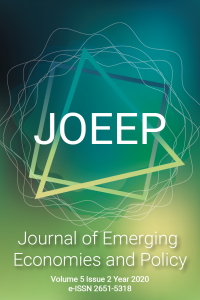Su Kirliliğinin Biyolojik İzleme Kategorilerinin Tartışılması ve Bu Modellerin Batı Marmara Kıyılarına Uygulanması
Abstract
Türkiye’deki mevcut kullanılabilir su kaynağının kullanım oranı % 35-36 civarında olup bunun, 7 milyar m3’ü %60 içme ve kullanma suyu olarak, 5 milyar m3’ü %40’ı ise sanayide kullanılmaktadır. Türkiye’de 1990’lı yıllardan beri UNEP tarafından koordine edilen MEDPOL programı kapsamında, Akdeniz ve Ege Denizi’nde deniz kirlilik izleme programı uygulanmaktadır. Ayrıca, 2004 yılından itibaren Karadeniz’de de kirlilik izleme sistemi oluşturulmuştur. 82 izleme noktasında 95 parametrenin ölçümüne dayalı izleme sistemi kapsamında nehirlerin taşıdığı kirliliğin saptanması için nehir ağızlarında da izleme yapılmaktadır. Türkiye’de çeşitli kurumlar aracılığı ile su kirliliği izleme çalışmaları yürütülmekte, yapılan bu kirlilik izleme çalışmaları çoğu kez birbirinden bağımsız şekilde yürütülmektedir. Bu çalışmalara rağmen Türkiye’de Entegre bir kirlilik izleme stratejisi ise uygulanamamaktadır. Bu çalışma, yeni stratejiler ve projelerin geliştirilmesi hususlarını ortaya koymaktadır. Ayrıca bu stratejiler Batı Marmara Kıyıları için de uygulanmıştır.
Keywords
References
- Baltacı, F., Onur, A.K. (2008). Water quality monitoring studies of turkey with present and probable future constraints and opportunities, Desalination, 226, 321-327.
- Bartram, J., Ballance, R. (1996). Water quality monitoring - A practical guide to the design and implementation of freshwater quality studies and monitoring programmes, UNEP/WHO.
- Bayraktar, İ. (2007). Mudurnu deresi ve kollarında su kalitesinin belirlenmesi, Yüksek Lisans Tezi, Sakarya Üniversitesi
- European Commission. (2003). Common implementation strategy for the water framework directive (2000/60/EC), Guidance Document, No:13.
- Gray, N.F. (2005). Water Technology, Water Quality Assessment, 2, 193-254. (Water Quality Observation Studies Presentation as part of Water Products Law no 1380 and Nitrate Regulation).
- Harmsen, J. (2009). Türkiye’de su sektörü için kapasite geliştirilmesi projesi, 3.7.2.7. No’lu Görev Raporu.
- Kazancı, N. & Türkmen, G. (2008). A reserach on water quality of kelkit stream using benthic macroinvertebrates and physicochemical variables, Review of Hydrobiology, 2, 145-160.
- Ministry of Environment and Forestry (2007). National Biodiversity Strategy and Action Plan. Ankara: Tasarım Ofset.
- Ministry of Forestry and Water Issue (2012). Draft National River Basin Management Strategy 2012-2023.
- Schaumburg, J. & Schranz, C. (2004). Ecological classification of macrophytes and phytobenthos for rivers in germany according to the water framework directive, Limnologica, 34, 283-301.
- Zeybek, M. (2007). Çukurca dere ve Isparta deresinin su kalitesinin makrozoobentik organizmalara göre belirlenmesi, Yüksek Lisans Tezi, Süleyman Demirel Üniversitesi.
Discussion of Biological Monitoring Categories of Water Pollution and Application of These Models to West Marmara Coasts
Abstract
The usage rate of available water supply in Turkey is around 35-36 %; 7 billion m3 of this constitutes the 60 % of it and is used as drinking and tap water, and 5 billion m3 that is constituting the 40 % is used in industry. Within the context of the MEDPOL programme which is coordinated by the UNEP since the 1990s in Turkey, a marine pollution observation programme is practiced in the Mediterranean and Aegean Seas. Furthermore, a pollution observation system has also been established in the Black Sea since 2004. In order to determine the pollution that rivers carry, the estauries are observed in the framework of an observation system which is based on the measuring of 95 parameters on 82 observation points. Various institutions carry out water pollutiosn observation studies in Turkey and these pollution observation studies are usually carried out independently. An integrated pollution observation strategy is not applicable. This study highlights the importance of developing new strategies and projects.
Keywords
References
- Baltacı, F., Onur, A.K. (2008). Water quality monitoring studies of turkey with present and probable future constraints and opportunities, Desalination, 226, 321-327.
- Bartram, J., Ballance, R. (1996). Water quality monitoring - A practical guide to the design and implementation of freshwater quality studies and monitoring programmes, UNEP/WHO.
- Bayraktar, İ. (2007). Mudurnu deresi ve kollarında su kalitesinin belirlenmesi, Yüksek Lisans Tezi, Sakarya Üniversitesi
- European Commission. (2003). Common implementation strategy for the water framework directive (2000/60/EC), Guidance Document, No:13.
- Gray, N.F. (2005). Water Technology, Water Quality Assessment, 2, 193-254. (Water Quality Observation Studies Presentation as part of Water Products Law no 1380 and Nitrate Regulation).
- Harmsen, J. (2009). Türkiye’de su sektörü için kapasite geliştirilmesi projesi, 3.7.2.7. No’lu Görev Raporu.
- Kazancı, N. & Türkmen, G. (2008). A reserach on water quality of kelkit stream using benthic macroinvertebrates and physicochemical variables, Review of Hydrobiology, 2, 145-160.
- Ministry of Environment and Forestry (2007). National Biodiversity Strategy and Action Plan. Ankara: Tasarım Ofset.
- Ministry of Forestry and Water Issue (2012). Draft National River Basin Management Strategy 2012-2023.
- Schaumburg, J. & Schranz, C. (2004). Ecological classification of macrophytes and phytobenthos for rivers in germany according to the water framework directive, Limnologica, 34, 283-301.
- Zeybek, M. (2007). Çukurca dere ve Isparta deresinin su kalitesinin makrozoobentik organizmalara göre belirlenmesi, Yüksek Lisans Tezi, Süleyman Demirel Üniversitesi.
Details
| Primary Language | English |
|---|---|
| Subjects | Environment and Culture |
| Journal Section | Research Article |
| Authors | |
| Publication Date | December 27, 2020 |
| Published in Issue | Year 2020 Volume: 5 Issue: 2 |
JOEEP is published as two issues per year June and December and all publication policies and processes are conducted according to the international standards. JOEEP accepts and publishes the research articles in the fields of economics, political economy, fiscal economics, applied economics, business economics, labour economics and econometrics. JOEEP, without depending on any institution or organization, is a non-profit journal that has an International Editorial Board specialist on their fields. All “Publication Process” and “Writing Guidelines” are explained in the related title and it is expected from authors to Show a complete match to the rules. JOEEP is an open Access journal.


